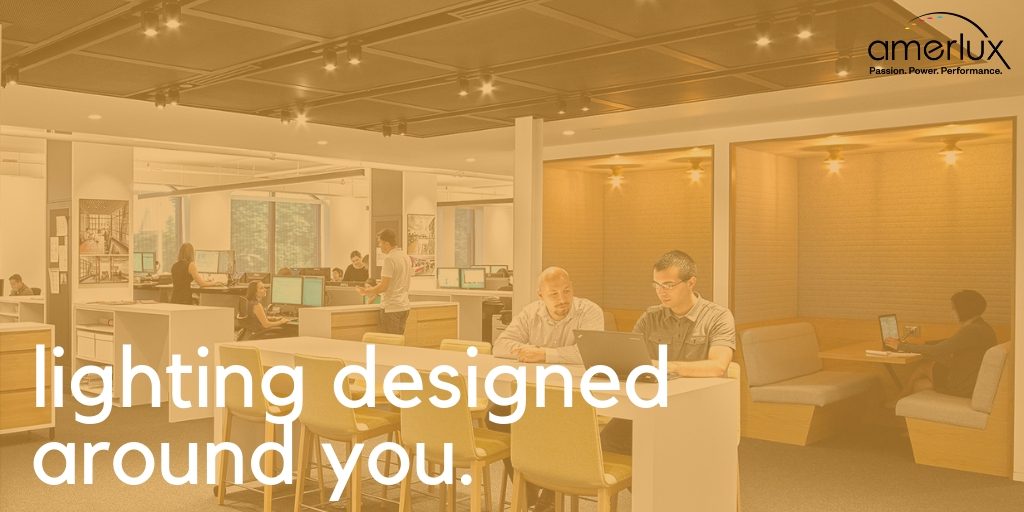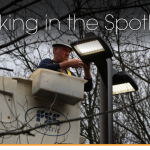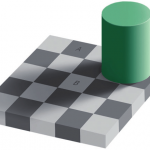How Lighting Boosts Productivity: 4 Things Designers Should Know

The best design is a marriage between form and function that pleases every stakeholder and looks beautiful at the same time. Different constituents often have goals that diverge at best or compete at worst and satisfying everyone can be harder than spotting a unicorn in the wild.
But, achieving this balance does not by definition have to be this difficult. Here’s a way to satisfy everyone: Maximize the effect of lighting on worker productivity in the space.
End users will love it because they will feel healthier and do better work. If the building is owned by the company who occupies it, management will appreciate the extra output from their employees. If the end users lease/rent the space from the owners, then the owners will benefit from having a state-of-the-art space to attract future tenants.
Here are four things lighting designers should know about how lighting enhances productivity:
1. The Value of Productivity
The internet is glutted with “hacks” and tips to improve your productivity. There’s a reason for this: productivity is valuable. How valuable? Enough that moving the productivity needle a wee bit can deliver larger gains than other popular cost savings, such as energy efficiency initiatives or reducing your rent.
Commercial real estate firm JLL developed a formula to quantify potential productivity savings, called the 3/30/300 rule. While actual figures may vary across locations, in general, organizational expenses (per square foot, per year) break down like this:
- $3 for utilities
- $30 for rent/mortgage
- $300 for payroll
The average commercial building is a little over 15,000 square feet (as per the US Energy Information Administration). Using the 3/30/300 proportions, the annual spending for a business in an average building should roughly break down to $45,000 on utilities, $450,000 on rent and $4,500,000 on employees. (The total amount adds up to $4,995,000).
Reducing utility costs by 50 percent saves this company $22,500 annually. Improve space utilization by 10 percent and they save $45,000. Increase employee productivity by 5 percent and the company saves $225,000.
A small change in the employee category can have an enormous impact on a company’s bottom line. Which is why designing a project’s lighting around the end user’s productivity is important.
2. The Temperature of Productivity
One of the most significant factors in how light impacts people is its color temperature. Measured in degrees Kelvin (K), the warm tones of firelight are about 2,000K, while the icy tones of an overcast winter day top out around 7,000K.
Warm lighting (between 2,000K and 4,000K) is very comfortable and encourages relaxation. This light is good for creating an intimate ambience, like in a restaurant or break room. Warm-toned lighting is also useful for meeting rooms a calm and trusting atmosphere is needed.
Cold lighting (between 5,000K and 7,000K) has a lot of blue in it and blue light enhances alertness, boosts moods and lowers the sleep hormone melatonin. (which is why the experts recommend against looking at phone/computer screens right before bedtime, as the screens emit a lot of blue light). This kind of light is ideal for brainstorming rooms or any space where workers should feel invigorated and galvanized to share ideas.
In between warm- and cool-toned lighting is a mid-range (4,000K to 5,000K) that is excellent for multi-purpose spaces, like conference rooms. It’s warm enough to be welcoming, but still cool enough to promote alertness.
Study after study demonstrates the stimulating properties of blue light and its effect on productivity, so it’s an important color temperature to use. However, to use a running analogy, blue light is like a sprint. Just like you can’t sprint through a marathon, it’s important to vary the color temperatures in a building. This way, users can sprint through productive sessions in one area and then rest in another area as they gear up for the next sprint.

3. Let Your Lights Shine Like the Sun—And Adjust Accordingly
From sunrise to sunset, the sun hits the whole light spectrum as it travels across the sky each day. There’s warm light, cold light, soft light, hard light and everything in between.
From a biological perspective, the sun is the source we measure all light against. It’s what our bodies have evolved to live with over millions of years. Thomas Edison invented the lightbulb around 1880, making the past 140 years of electrified light a mere blip in evolutionary time.
Just as the sun changes throughout the day, so should the artificial lights inside buildings. Start the day with cooler, bluer light that gradually changes to warmer, yellower light as the day progresses. Studies have shown that mimicking the sun’s light makes for happier, healthier employees who get way more done.
4. Goldilocks Lighting—Just Enough
Goldilocks and the Three Bears talks about finding porridge, chairs and beds that were just right, but if talked about lighting, surely, she would have found one room that was too dark and one that was too bright before finally finding a room that was just right.
It’s important to get the light just right in an office for maximal productivity. Too little and too much light are both deleterious for the same reasons: they cause eye strain, trigger headaches and impair job focus. Dim lighting also encourages drowsiness.
One study actually found that the brain makes “fewer connections” when working in dim conditions, resulting in “diminished learning and memory performance. In other words, dim lights are producing dimwits.”
Hitting the perfect light levels is critical to reach peak productivity levels (as well as optimal employee health outcomes).
Lighting for end user productivity can satisfy all the constituents in a project and make for a better end result. Amerlux has been developing innovative lighting solutions to power commercial buildings for decades. Their lights illuminate cities and offices all over the world. Learn more here.

